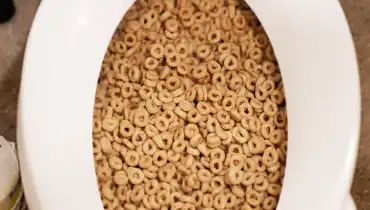Can You to Flush Food in the Toilet?
DetailsJust about every person has his or her own assumption when it comes to Is it safe to flush food (especially rice) down the toilet?.

Introduction
Many people are often confronted with the problem of what to do with food waste, especially when it involves leftovers or scraps. One typical inquiry that develops is whether it's alright to purge food down the bathroom. In this write-up, we'll explore the reasons why individuals might take into consideration flushing food, the effects of doing so, and alternate approaches for appropriate disposal.
Reasons that people could consider purging food
Lack of understanding
Some people may not recognize the potential damage caused by flushing food down the commode. They might incorrectly think that it's a harmless method.
Convenience
Flushing food down the commode may appear like a fast and easy option to disposing of unwanted scraps, specifically when there's no nearby trash can available.
Negligence
In many cases, individuals may simply select to flush food out of large laziness, without considering the repercussions of their activities.
Effects of flushing food down the toilet
Environmental effect
Food waste that winds up in rivers can add to pollution and harm aquatic environments. In addition, the water made use of to purge food can strain water resources.
Plumbing concerns
Purging food can lead to clogged pipes and drains, causing costly plumbing repair work and troubles.
Kinds of food that must not be flushed
Fibrous foods
Foods with coarse structures such as celery or corn husks can obtain tangled in pipes and trigger blockages.
Starchy foods
Starchy foods like pasta and rice can take in water and swell, resulting in obstructions in pipes.
Oils and fats
Greasy foods like bacon or cooking oils should never ever be purged down the toilet as they can solidify and create clogs.
Correct disposal approaches for food waste
Making use of a waste disposal unit
For homes furnished with garbage disposals, food scraps can be ground up and flushed with the plumbing system. However, not all foods are suitable for disposal in this fashion.
Recycling
Particular food product packaging materials can be recycled, reducing waste and decreasing ecological effect.
Composting
Composting is an environmentally friendly way to deal with food waste. Organic materials can be composted and made use of to enhance soil for gardening.
The relevance of appropriate waste management
Reducing ecological damage
Proper waste monitoring methods, such as composting and recycling, help decrease contamination and preserve natural deposits for future generations.
Securing plumbing systems
By staying clear of the method of flushing food down the toilet, home owners can avoid costly pipes repair work and keep the stability of their pipes systems.
Final thought
To conclude, while it might be tempting to flush food down the bathroom for comfort, it is necessary to recognize the potential effects of this activity. By embracing appropriate waste administration practices and getting rid of food waste properly, individuals can contribute to much healthier pipes systems and a cleaner atmosphere for all.
FLUSH FOOD DOWN THE TOILET?
FLUSHING FOOD CAN CAUSE BLOCKED DRAINS IN YOUR HOME
All of the plumbing fixtures in your home are connected to the same sewer pipe outside of your home. This outdoor sewer pipe is responsible for transporting all the wastewater from your home to the Council sewer mains. Even small pieces of food that go down the kitchen sink can cause problems for your sewer. It should therefore be obvious that flushing larger bits of food, such as meat, risks a clog in either the toilet itself or the sewer pipes. Flushing greasy food is even more problematic because oil coagulates when it cools, coating the interior lining of your pipes.
THE TOILET IS NOT A BIN
Food isn’t the only thing that people shouldn’t be flushing down the toilet. People use the toilet to dispose of all kinds of things such as tampons, makeup wipes, dental floss, kitty litter and even underwear. Water goes to great lengths to educate residents about the high costs and stress placed on wastewater treatment systems simply from people flushing the wrong stuff down the toilet. It costs taxpayers millions of dollars each year, and homeowners thousands in blocked drain repairs.
FLUSHING FOOD IS A WASTE OF WATER
Flushing food is a waste of our most precious resource - water. In June this year Level 1 water restrictions were introduced to protect water supply from drought conditions. Much of New South Wales continues to be affected by prolonged drought with recent figures revealing up to 97 per cent of the state remains in drought. Depending on whether you have a single or dual flush toilet, every single flush uses between five and 11 litres of water. In the current climate this is a huge amount of water to be wasting on flushing food that should be placed in the bin (or better yet, the compost).
https://www.jabplumbingsolutions.com.au/blog/can-you-flush-food-down-the-toilet

We had been shown that article about What Can Happen If You Flush Food Down the Toilet? from a pal on a different domain. Enjoyed reading our entry? Please share it. Let somebody else discover it. I value reading our article about Flushing Food Down the Toilet?.
Call Today